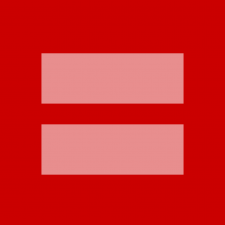 Many people, gay and straight alike, claim to have a special ability to tell if a person is gay or straight. If you are endowed with this gaydar (a portmanteau of gay and radar) you can identify someone's sexual orientation just by looking at them.
Many people, gay and straight alike, claim to have a special ability to tell if a person is gay or straight. If you are endowed with this gaydar (a portmanteau of gay and radar) you can identify someone's sexual orientation just by looking at them.
Did you just nod and agree that you have it?
You don't. Social science scholars claim that not only do people not possess this ability, but you're stereotyping if you claim you do.
University of Wisconsin-Madison psychologist William Cox and colleagues recently published an article in the Journal of Sex Research in which they examined the phenomenon. In the study they set out to challenge a 2008 paper claiming (both papers are social psychology, so reader beware of any conclusions) to have found evidence for gaydar. The new paper determined that some of the images for gay and lesbian people were higher resolution than for the straight people. When correcting for the disparity in image quality, all "evidence" of gaydar disappeared.
Cox has authored several studies on gaydar and says it is not real in part, because the gay population is such a small subset of the total population: "Imagine that 100 percent of gay men wear pink shirts all the time, and 10 percent of straight men wear pink shirts all the time. Even though all gay men wear pink shirts, there would still be twice as many straight men wearing pink shirts. So, even in this extreme example, people who rely on pink shirts as a stereotypic cue to assume men are gay will be wrong two-thirds of the time."
Even if gaydar is wrong most of the time, it's a become a sensation, a game to play with your friends and even an actual game show in Thailand.
Yet there is concern that gaydar is nothing more than socially acceptable stereotyping, based on how people dress or act, no different than stereotyping people for their skin color or their gender.
Cox believes his previous survey work has shown how the term itself legitimizes the use of those stereotypes. He found that when people are told they have"good gaydar" they use the stereotypes significantly more than when people are told they are "stereotyping." Its no different than when people are less likely to eat a baby cow, but they will be fine with veal.
Cox believes the problem is more serious than comparing a big steer to a small steer; it may be malicious: "there was a subset of people who were personally very prejudiced, but they didn't want other people to think that they were prejudiced. They tended to express prejudice only when they could get away with it."
By using "gaydar" instead of "stereotyping" we may be allowing people to get away with prejudice. So, it may be one more microaggression that people in the humanities or social sciences can dwell on while there are many real problems in the world that should be the focus of our attention instead.


